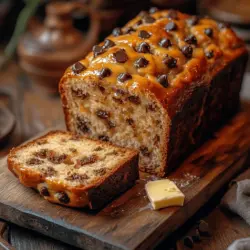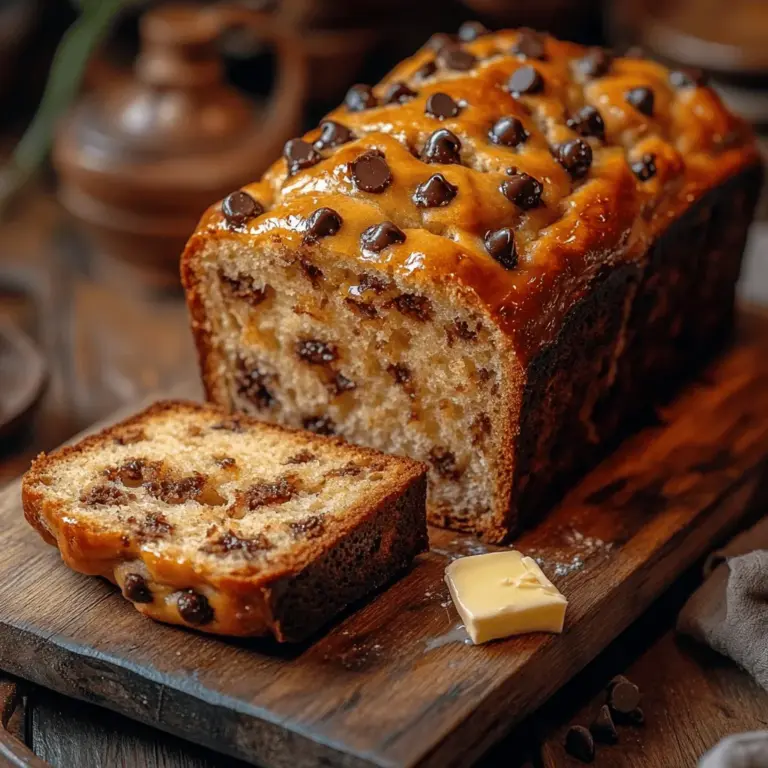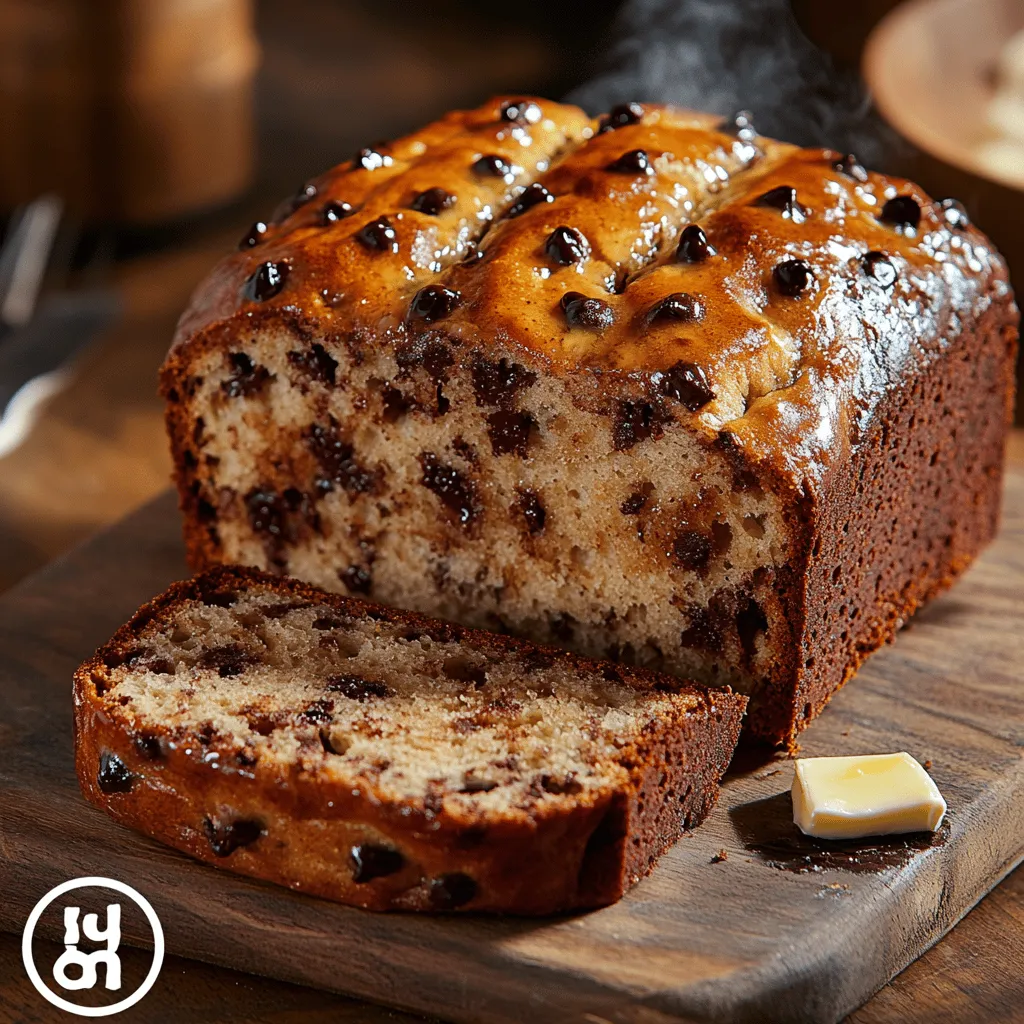Introduction
There’s something undeniably comforting about the aroma of freshly baked bread wafting through your home. The anticipation that builds as you await the warm, golden loaf is a sensory experience that transcends the act of cooking—it evokes nostalgia, warmth, and an undeniable sense of satisfaction. Enter Sweet Dreams Bread, a delightful recipe that combines simplicity with indulgence, creating a loaf that is as versatile as it is delicious. Whether you enjoy it plain, toasted, or adorned with your favorite spread, this bread is sure to become a cherished staple in your kitchen.
Sweet Dreams Bread is not just any ordinary loaf; it is a celebration of quality ingredients that come together to create a texture that is soft, tender, and lightly sweetened. The use of sweetened condensed milk adds a unique richness that sets this bread apart from traditional recipes, making it perfect for breakfast, snacks, or even dessert. In this article, we will explore the magic of this recipe, delving into the essential ingredients and the science behind bread making that will help you achieve a perfect loaf every time.
The Comfort of Homemade Bread
Baking bread at home is an experience that brings a sense of accomplishment and joy. Many home bakers can attest to the therapeutic nature of kneading dough and watching it rise as it transforms from simple ingredients into a beautiful, fragrant loaf. Homemade bread allows you to control the quality of ingredients, ensuring that you are nourishing your body with wholesome goodness. Additionally, there’s an emotional connection to the process; it brings family and friends together around the table, creating lasting memories over shared meals.
In the hustle and bustle of modern life, making bread from scratch offers a reprieve from the chaos. It’s a moment to slow down and engage with the process, relishing each step as you create something that nourishes not only the body but the soul. Sweet Dreams Bread, with its rich flavor and delightful texture, embodies this sentiment, inviting you to experience the joy of baking.
The Importance of Quality Ingredients
At the heart of every great recipe lies the quality of its ingredients. For Sweet Dreams Bread, each component plays a crucial role in achieving the desired flavor and texture. Choosing high-quality ingredients not only enhances the taste but also elevates the overall baking experience. Here’s a closer look at what you’ll need for this recipe and why each item is essential.
Understanding the Ingredients
All-Purpose Flour
All-purpose flour serves as the foundation of any bread recipe, providing the necessary structure and texture. It contains a balanced amount of protein, which is essential for gluten development. Gluten is what gives bread its chewiness and elasticity, allowing it to rise and hold its shape. When selecting flour, opt for unbleached all-purpose flour for a more natural taste and texture.
Sweetened Condensed Milk
Sweetened condensed milk is the star ingredient in Sweet Dreams Bread, imparting an irresistible sweetness and moisture that cannot be replicated with regular milk or sugar alone. This creamy ingredient not only enriches the flavor but also contributes to the bread’s soft texture, making each bite melt in your mouth. Its unique composition of sugar and milk helps in browning the crust, adding to the visual appeal.
Warm Water
Water is a crucial element in the bread-making process, as it activates the yeast and hydrates the flour. Using warm water (around 110°F or 43°C) is essential for optimal yeast activation. If the water is too hot, it can kill the yeast, while water that is too cold may not activate it effectively. The warmth encourages the yeast to flourish, leading to a better rise in your dough.
Granulated Sugar
Sugar plays a dual role in bread making. Not only does it sweeten the dough, but it also acts as food for the yeast, aiding in fermentation. When the yeast consumes the sugar, it produces carbon dioxide, which causes the dough to rise. In Sweet Dreams Bread, sugar enhances the overall flavor and contributes to the bread’s tender crumb.
Instant Yeast
Instant yeast is a time-saving ingredient that allows for quicker rises and less waiting time. Unlike active dry yeast, instant yeast can be mixed directly into the dry ingredients without prior activation. This convenience makes it a favored choice among home bakers, especially for recipes like Sweet Dreams Bread, where a fluffy texture is paramount.
Salt
Salt is often overlooked in baking, but it plays a vital role in enhancing flavor and controlling the fermentation process. It strengthens gluten structure, contributing to the dough’s elasticity and chewiness. Moreover, salt regulates yeast activity, preventing it from rising too quickly, which can lead to undesirable textures. A pinch of salt elevates the taste of Sweet Dreams Bread, making it more enjoyable.
Unsalted Butter
Unsalted butter adds richness and flavor to the bread, creating a tender crumb and a delightful mouthfeel. The fat in butter coats the flour proteins, inhibiting gluten development to some extent, which results in a softer loaf. Using unsalted butter allows you to better control the salt content in your recipe, ensuring a perfectly balanced flavor.
Large Egg
Eggs are essential in bread making as they provide moisture, richness, and structure. They act as a binding agent, helping to hold the ingredients together while also contributing to the bread’s rise. The proteins in the egg coagulate during baking, adding stability to the loaf. In Sweet Dreams Bread, the egg enhances the overall flavor and texture, making it a key component in achieving the perfect consistency.
Vanilla Extract
A splash of vanilla extract adds a subtle yet delightful flavor enhancement to Sweet Dreams Bread. It complements the sweetness of the condensed milk and sugar, elevating the overall taste profile. High-quality vanilla extract can transform an ordinary loaf into something truly special, making it a worthwhile addition to the ingredient list.
Chocolate Chips or Nuts (Optional)
To customize your Sweet Dreams Bread, consider adding chocolate chips or nuts. These optional ingredients not only enhance the flavor but also provide a delightful texture contrast. Chocolate chips melt into the warm bread, creating pockets of gooey sweetness, while nuts add a satisfying crunch. Feel free to experiment with different combinations to find your perfect version of this delicious loaf.
The Science Behind Bread Making
Understanding the science behind bread making can elevate your baking skills and help you troubleshoot any issues that may arise. The process involves several key steps, each of which contributes to the final product’s texture and flavor.
Activation of Yeast
The first step in bread making is activating the yeast, a crucial process that determines the rise of your dough. Yeast is a living organism that feeds on sugar, producing carbon dioxide gas and alcohol in the process. This gas gets trapped in the dough, causing it to expand and rise. When using instant yeast, you can mix it directly with the flour and sugar, allowing it to activate as the dough is kneaded and hydrated.
Gluten Development Through Kneading
Kneading is an essential step in bread making that develops gluten, the protein network responsible for the dough’s structure. As you knead the dough, the gluten strands stretch and align, creating a strong framework that can trap the gas produced by the yeast. This process is vital for achieving a chewy texture and a well-structured loaf. Kneading should be done until the dough is smooth and elastic, which usually takes about 8-10 minutes by hand or 5-7 minutes using a stand mixer.
Importance of Rising Times
Once the dough is kneaded, it needs to rise, allowing the yeast to work its magic. The first rise, known as fermentation, typically lasts between 1 to 2 hours, depending on the temperature and humidity of your environment. During this time, the dough will double in size as the yeast produces carbon dioxide. After the first rise, the dough is gently punched down to release excess gas before shaping and allowing it to rise again (the second rise). This second rise is crucial for developing flavor and a light, airy crumb structure.
Understanding these key elements of bread making will not only help you create a perfect loaf of Sweet Dreams Bread but also empower you to dive deeper into the world of baking, experimenting with flavors and techniques along the way. With this knowledge, you are well on your way to mastering the art of bread making. Stay tuned for the next part, where we will guide you through the detailed instructions to bring your Sweet Dreams Bread to life.


